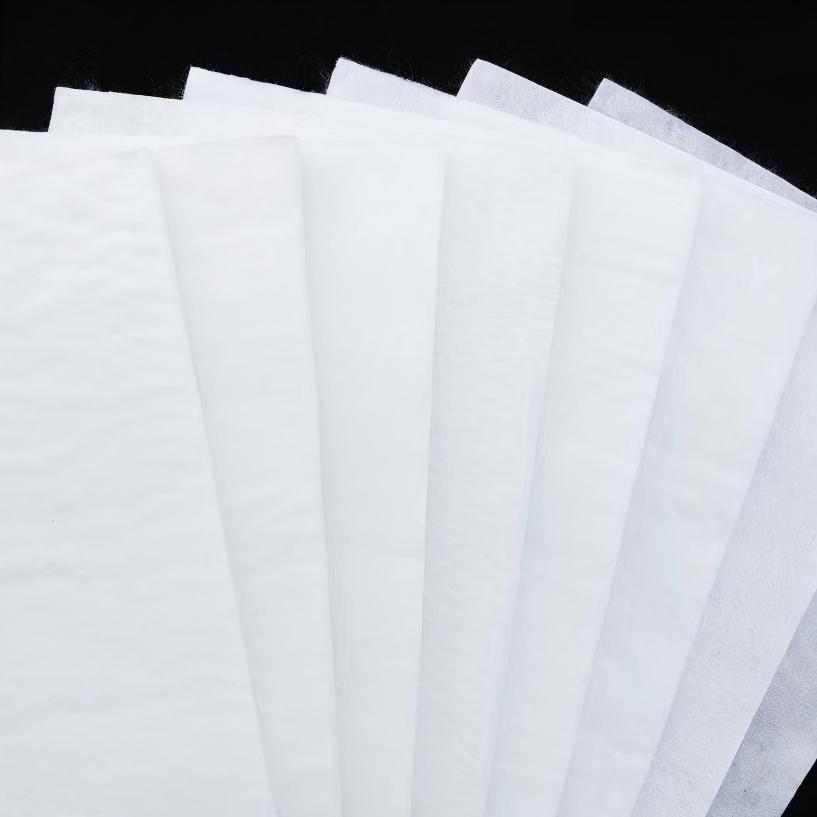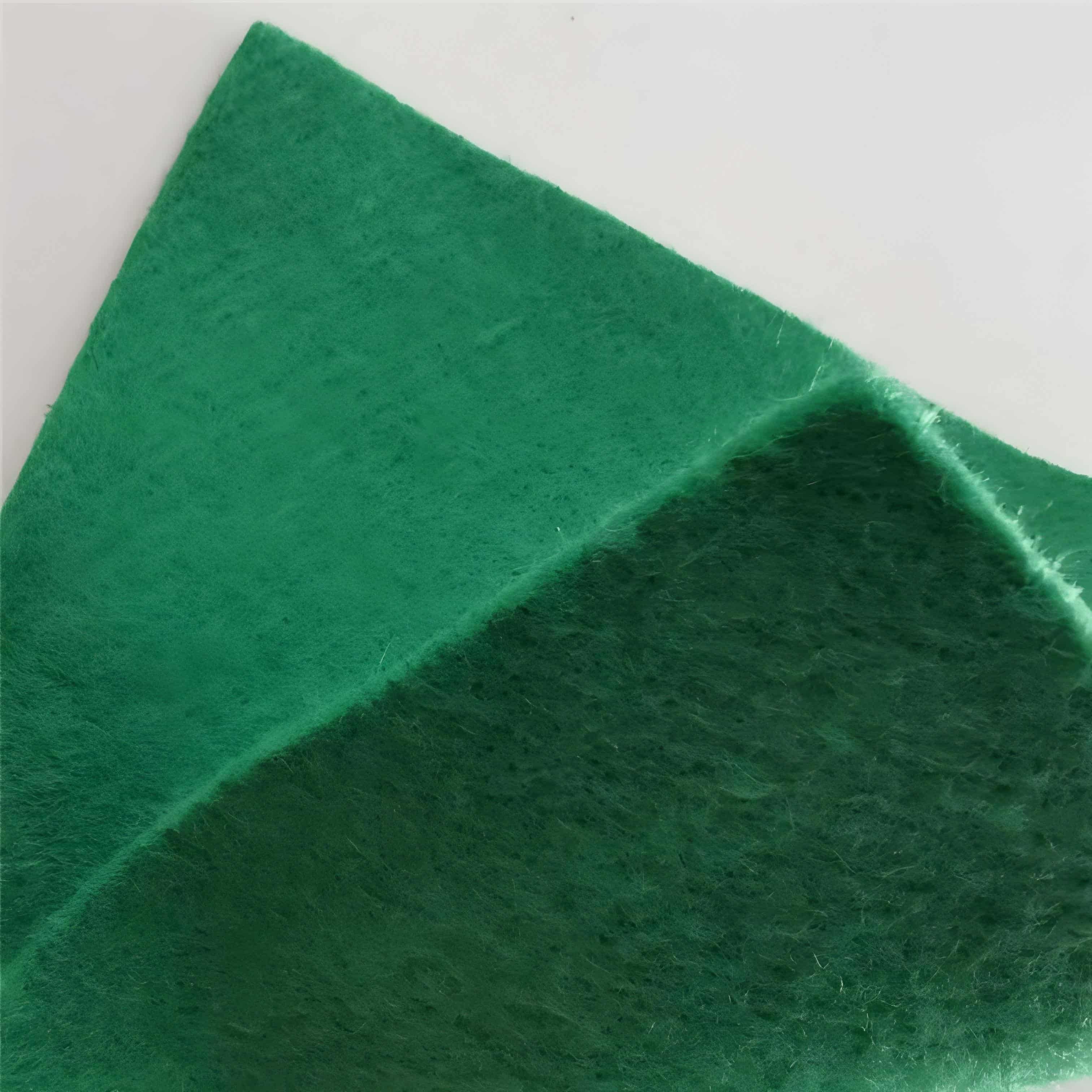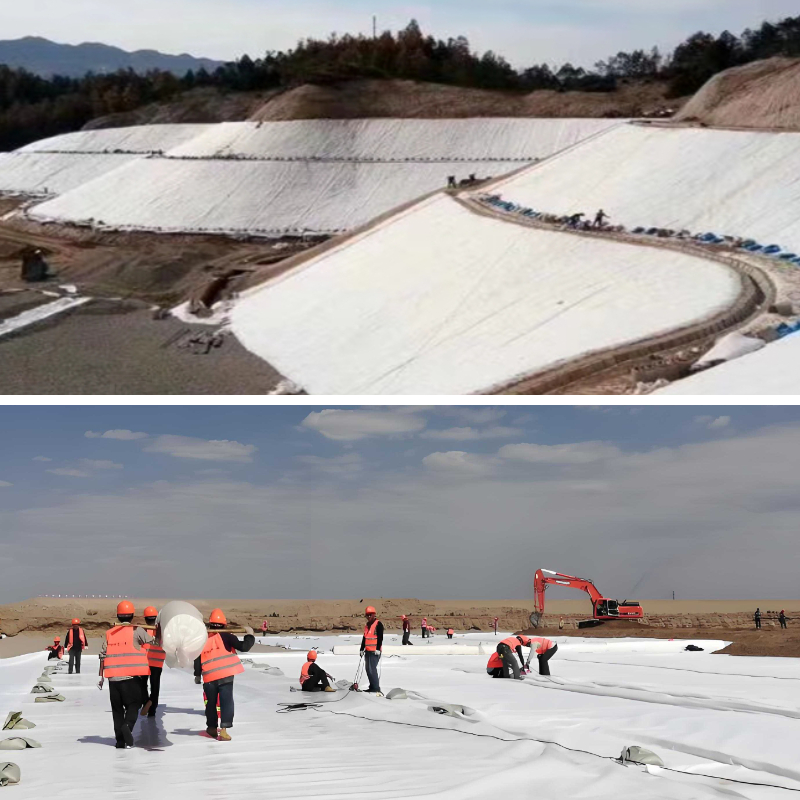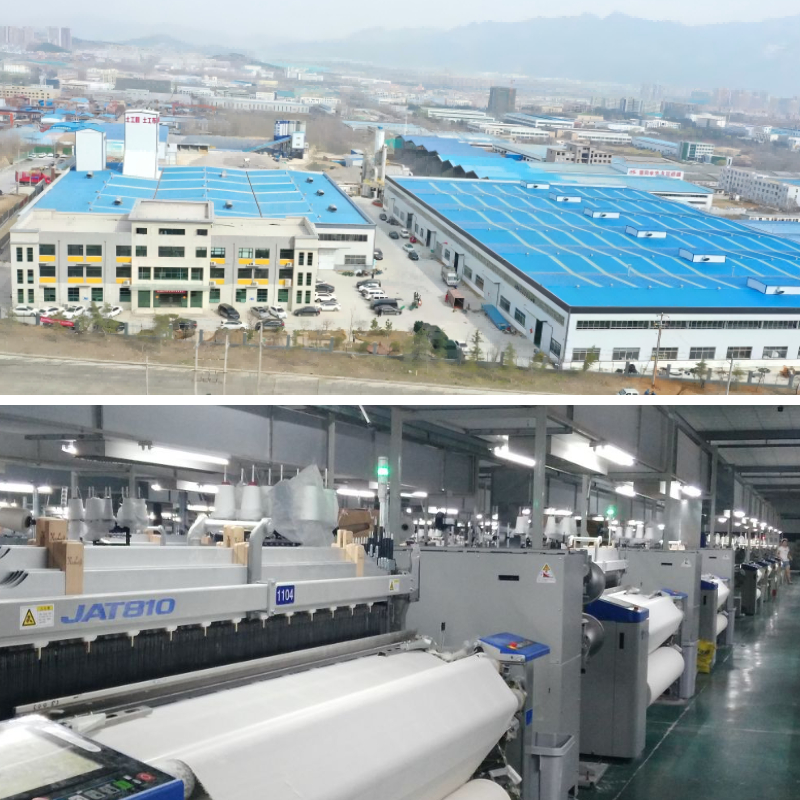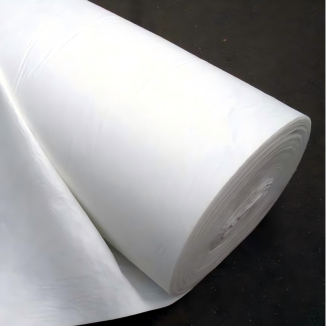Geo Fabric Non Woven
1. Powerful functionality:A single piece of material can simultaneously achieve multiple functions such as isolation, reinforcement, filtration, drainage, and protection, replacing traditional complex structures such as sand layers and filter layers.
2. Efficient construction:The material is lightweight, supplied in rolls, easy and fast to lay, can greatly shorten the construction period, reduce labor input, and is less affected by environmental factors such as weather.
3. Excellent performance
Good durability: resistant to chemical corrosion, resistant to microbial and insect infestations, with a long service life.Good mechanical properties: high tensile strength, can effectively reinforce soil, and evenly distribute loads.
4. Economic and Environmental Protection:Reducing dependence on natural raw materials and effectively preventing soil erosion is beneficial for ecological protection.
Product Introduction:
Geo Fabric Non Woven is a type of permeable polymer (such as polypropylene, polyester, polyethylene, etc.) woven or non-woven material made into a cloth like shape, hence the name "geotextile". It is widely used in geotechnical engineering, together with soil, rock or other geotechnical materials, utilizing its excellent mechanical and physical properties to perform one or more functions such as reinforcement, protection, filtration, drainage, isolation, etc.
Simply put, it is an "intelligent cloth" buried in soil or used in soil.
Characteristics and Performance
The performance characteristics of geotextiles are mainly reflected in the following three aspects, which are also the basis for their functional implementation:
1. Physical properties:
Thickness and mass per unit area: affecting its compressibility and durability.
Porosity: The ratio of pore volume to total volume in a material, which directly affects its permeability and soil retention properties.
Pore size: an indicator that represents the pore size of geotextiles (such as equivalent pore size O90). This is the key to its filtering function, which needs to be selected according to the particle size of the protected soil to achieve "permeable but impermeable soil".
2. Mechanical properties:
Tensile strength and elongation at break: These are the core of its reinforcement function. High tensile strength enables it to withstand enormous tensile forces, restrain soil deformation, and improve soil stability.
Tear strength, burst strength, and penetration strength: reflect their ability to resist construction damage and external impact punctures, and are related to durability.
Friction characteristics: The friction coefficient of the contact surface between geotextile and soil determines the interface stability of reinforced soil structures.
3. Hydraulic performance:
Permeability: The ability to allow water flow vertically through its plane, which is the foundation for achieving drainage and filtration functions.
Water conductivity: the ability to transport water flow within its own plane (mainly used for drainage composite materials).
Product Parameters:
project | metric | ||||||||||
Nominal strength/(kN/m) | |||||||||||
6 | 9 | 12 | 18 | 24 | 30 | 36 | 48 | 54 | |||
1 | Longitudinal and transverse tensile strength / (kN/m) ≥ | 6 | 9 | 12 | 18 | 24 | 30 | 36 | 48 | 54 | |
2 | Maximum elongation at maximum load in longitudinal and transverse directions/% | 30~80 | |||||||||
3 | CBR top penetration strength /kN ≥ | 0.9 | 1.6 | 1.9 | 2.9 | 3.9 | 5.3 | 6.4 | 7.9 | 8.5 | |
4 | Longitudinal and transverse tearing strength /kN | 0.15 | 0.22 | 0.29 | 0.43 | 0.57 | 0.71 | 0.83 | 1.1 | 1.25 | |
5 | Equivalent aperture O.90(O95)/mm | 0.05~0.30 | |||||||||
6 | Vertical permeability coefficient/(cm/s) | K× (10-¹~10-), where K=1.0~9.9 | |||||||||
7 | Width deviation rate /% ≥ | -0.5 | |||||||||
8 | Unit area mass deviation rate /% ≥ | -5 | |||||||||
9 | Thickness deviation rate /% ≥ | -10 | |||||||||
10 | Thickness coefficient of variation (CV)/% ≤ | 10 | |||||||||
11 | Dynamic perforation | Puncture hole diameter/mm ≤ | 37 | 33 | 27 | 20 | 17 | 14 | 11 | 9 | 7 |
12 | Longitudinal and transverse fracture strength (grab method)/kN ≥ | 0.3 | 0.5 | 0.7 | 1.1 | 1.4 | 1.9 | 2.4 | 3 | 3.5 | |
13 | Ultraviolet resistance (Xenon arc lamp method) | Longitudinal and transverse strength retention rate% ≥ | 70 | ||||||||
14 | Ultraviolet resistance (fluorescence UV lamp method) | Longitudinal and transverse strength retention rate% ≥ | 80 | ||||||||
Product Applications:
1. Water conservancy engineering
River/channel management: Laying geotextile (often combined with geomembrane) on the slope of the river channel, on the one hand, to prevent soil from mixing with the anti-seepage membrane through isolation, and on the other hand, to resist water flow erosion and prevent slope collapse through protective measures;
Reservoir/embankment engineering: Laying geotextile as a filter layer on the upstream slope of the embankment to prevent the infiltration of reservoir water and the removal of soil particles from the embankment, thus avoiding the disaster of "pipe surge"; Laying reinforced geotextile inside the dam to enhance the overall anti sliding stability of the dam;
Sewage treatment plant: Geotextile is laid at the bottom of sedimentation tanks and oxidation ditches as a filtering layer to intercept sludge particles, while protecting the anti-seepage membrane below from sharp impurities piercing.
2. Transportation Engineering
Highway/railway subgrade: Lay geotextile between the subgrade fill and the cushion layer (gravel layer) to prevent soil particles from infiltrating the gravel layer and causing the cushion layer to fail through isolation; Simultaneously utilizing reinforcement to enhance the tensile strength of the roadbed, reducing roadbed settlement and cracks;
Airport runway: Lay geotextile between the runway base and foundation to enhance the overall integrity of the base and prevent cracking of the runway due to uneven settlement of the foundation;
Tunnel engineering: Geotextile (i.e. "waterproof board cushion layer") is laid between the tunnel lining (concrete) and the surrounding rock. On the one hand, it serves as a drainage layer to divert water seepage from the surrounding rock, and on the other hand, it protects the waterproof board from being pierced by sharp rocks in the surrounding rock.
3. Construction and Municipal Engineering
Building foundation treatment: laying reinforced geotextile in soft soil foundation (such as silt and peat soil), forming a "composite foundation" with sand and gravel cushion layer, enhancing the bearing capacity of the foundation and reducing building settlement;
Underground garage/basement: Lay geotextile between the bottom plate and foundation of the underground structure as a drainage layer to divert groundwater and prevent bottom plate leakage;
Landfill site: Geotextile is laid at the bottom and slope of the landfill site as a protective layer for the anti-seepage system (protecting HDPE anti-seepage membrane), and also as a filtering layer to intercept impurities in the leachate and prevent pipeline blockage.
4. Environmental Protection and Ecological Engineering
Artificial wetland: Laying geotextiles at the layered layers of wetland substrate (soil, sand and gravel) to isolate different substrate layers, while purifying wastewater through filtration to improve wetland wastewater treatment efficiency;
Slope ecological restoration: laying geotextiles on exposed slopes (such as mine restoration and road slopes) to fix the surface soil, prevent soil erosion, and provide a stable foundation for vegetation planting (some geotextiles can be combined with grass seeds to form "ecological geotextiles");
Irrigation in farmland: Laying geotextiles in irrigation channels to reduce channel leakage, improve water resource utilization, and prevent soil erosion on channel slopes by water flow.
In summary, geotextiles have become a key material for improving quality, reducing costs, and increasing efficiency in modern engineering construction due to their multifunctional, high-performance, and easy to construct advantages. Their application scenarios are still expanding with the development of material technology, such as new composite geotextiles and intelligent monitoring geotextiles.


